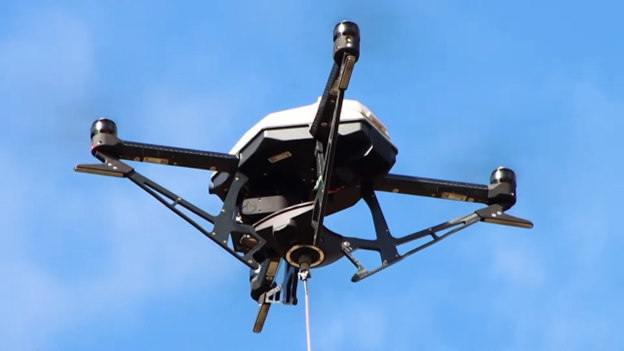How Tethered Drones Differ from Free-Flying Drones
Drones have revolutionized various industries, from surveillance to agriculture. They are broadly classified into two categories: tethered drones and free-flying drones. While both serve crucial roles, their capabilities, applications, and operational limitations differ significantly. This blog explores the key differences between these two drone types.
What
Are Tethered Drones?
Tethered
drones are UAVs connected to a ground station via a physical tether, usually a
cable. This tether provides continuous power and data transmission, allowing
them to stay airborne for extended durations without worrying about battery
life.
Tethered
drones have several advantages. They can remain airborne for hours or even days
due to their continuous power supply. Their stable communication ensures a
reliable data link, minimizing interference and signal loss. Additionally, they
comply with regulatory requirements more easily than free-flying drones since
aviation authorities impose fewer restrictions on them.
Despite
these advantages, tethered drones have certain limitations. Their mobility is
restricted by the tether’s length, limiting their operational range. They
require a stable base station, which makes them less suitable for dynamic or
large-area coverage. Moreover, the tether itself is a potential vulnerability
as it can be severed, leading to operational failure.
What
Are Free-Flying Drones?
Free-flying
drones operate independently without any physical connection to a ground
station. They rely on onboard batteries or fuel, offering greater mobility and
flexibility in various environments.
These
drones provide high mobility, allowing them to cover large areas and travel
long distances. Their versatility makes them suitable for applications such as
delivery services, search and rescue, aerial photography, and military
operations. Without a tether, they can navigate complex terrains without
physical constraints.
However,
free-flying drones also have limitations. Their flight time is restricted by
battery life, necessitating frequent recharges or battery swaps. Wireless
communication, which they rely on, is susceptible to signal interference,
especially in areas with heavy electromagnetic disruption. They also face
stricter regulatory requirements due to safety concerns associated with
unrestricted movement.
Key
Differences Between Tethered and Free-Flying Drones
Tethered
drones have significantly longer flight durations, often lasting hours or days,
as they receive power continuously from the ground. Their mobility is
restricted to the length of the tether, whereas free-flying drones have greater
operational range and flexibility. Communication for tethered drones is wired
and stable, reducing the risk of signal interference, while free-flying drones
depend on wireless communication, which can be unreliable in certain
conditions. Regulatory approval for tethered drones is generally easier to
obtain compared to free-flying drones, which face stricter restrictions due to
safety concerns.
Which
One Should You Choose?
The
choice between tethered and free-flying drones depends on the intended
application. Tethered drones are best suited for persistent surveillance,
traffic monitoring, and communication relay systems. On the other hand,
free-flying drones excel in dynamic applications such as aerial photography,
mapping, and search and rescue operations.
Conclusion
Both
tethered and free-flying drones have unique advantages and trade-offs.
Understanding these differences helps industries and individuals select the
right drone for their needs. Whether you need extended flight endurance or
unrestricted mobility, the right drone technology can significantly enhance
efficiency and performance.
.png)






Leave a Comment
Your email address will not be published. Required fields are marked *